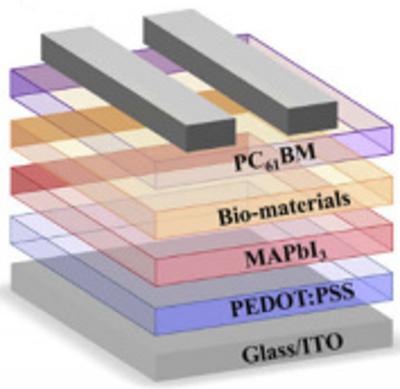Perovskites have shown potential for use as high performance photodetectors, where the responsivity and detectivity of the perovskite photodetector (PePDs) can be improved by engineering its interfacial properties. Researchers from the University of Electronic Science and Technology of China (UESTC) and City University of Hong Kong have reported the applications of bio-inspired materials, deoxyribonucleic acid (DNA) and guanine, as functional interfacial layers for high performance PePDs.

The best bio-material modified PePDs exhibit a â¼2Ã enhancement of the photo-current than that of the reference PePDs with no modifications. Further optimization of the thickness for the bio-materials based functional layers enables the PePD to achieve a remarkable responsivity of 0.37 A W'1 and detectivity of 1.85'Ã'1012 Jones at the wavelength of 745 nm.

